 I initially came across Marilyn Ferdinand’s invented quotation from me at her blog, Ferdy on Films, as explored in my last post, via its incorporation into a post at another blog, Mark Lynn Ferguson’s The Revivalist: Word from the Appalachian South. Titled “Shelby Lee Adams Invited Me to a Party,” Ferguson’s May 16, 2010 post reproduces Ferdinand’s fictitious quote verbatim (in a comment by Ferguson included in the subsequent exchange). This despite the fact that Ferguson had at his disposal the same 2002 film by Jennifer Baichwal, The True Meaning of Pictures: Shelby Lee Adams’ Appalachia, and thus had every opportunity to discover for himself the inaccuracy of Ferdinand’s irresponsible and unprofessional attribution to me of something I never said.
I initially came across Marilyn Ferdinand’s invented quotation from me at her blog, Ferdy on Films, as explored in my last post, via its incorporation into a post at another blog, Mark Lynn Ferguson’s The Revivalist: Word from the Appalachian South. Titled “Shelby Lee Adams Invited Me to a Party,” Ferguson’s May 16, 2010 post reproduces Ferdinand’s fictitious quote verbatim (in a comment by Ferguson included in the subsequent exchange). This despite the fact that Ferguson had at his disposal the same 2002 film by Jennifer Baichwal, The True Meaning of Pictures: Shelby Lee Adams’ Appalachia, and thus had every opportunity to discover for himself the inaccuracy of Ferdinand’s irresponsible and unprofessional attribution to me of something I never said.
Ferguson’s post seems mainly intended to celebrate the fact that, as its title indicates, Adams extended a friendly hand to him and this awestruck blogger consequently got to meet some of Adams’s subjects in person, experience their environment first-hand, and watch Adams in action. Nothing wrong with that — though, in my experience, meeting the maker of work complicates the critical process, as it requires the critic to sort out and separate response to the person (pro and con) from response to the work. I find no evidence of that process in Ferguson’s piece; but then he’s not a critic, just an Appalachia-booster.
![]() In the event, Ferguson merges his enthusiastic take on his new friend with discussion of Adams’s work and reaction to Baichwal’s film. Upon publication of this at his blog, there ensued a spirited if profoundly misguided discussion of my position on and comments about Adams’s work. I don’t go out of my way to rain on anyone’s parade, but I do try to get the facts straight, on the record, when my name and activities and output come up. So, on December 7, 2010, I posted a comment of my own there.
In the event, Ferguson merges his enthusiastic take on his new friend with discussion of Adams’s work and reaction to Baichwal’s film. Upon publication of this at his blog, there ensued a spirited if profoundly misguided discussion of my position on and comments about Adams’s work. I don’t go out of my way to rain on anyone’s parade, but I do try to get the facts straight, on the record, when my name and activities and output come up. So, on December 7, 2010, I posted a comment of my own there.
•
About my “belittling,” “infuriating,” and “ignorant” comments on Shelby Lee Adams’s work: These come from about 3 minutes’ worth of film clips in Jennifer Baichwal’s documentary, “The True Meaning of Pictures.” Those clips were extracted from several hours’ worth of interview. Inevitably, much context gets lost in the editing process.
Doesn’t mean I don’t stand by what I said — just that these snippets oversimplify what I said. That’s inevitable in such a film, and nothing for which I fault Baichwal. However, one thing that got left on the cutting-room floor I do regret:
My mother Frances Louise Allan was a West Virginia farmgirl, born and raised in Elkins, one year of college at Davis & Elkins before she left during the Depression. Her dad, my granddaddy Jim, was a house painter and carpenter by trade, and a farmer too: corn, hay, chickens, cows, pigs.
I spent summers with Jim and his wife Emily, Fran’s mom, on their Elkins farm during my pre-adolescent years. Took part in haying, watched hog slaughter, cleaned out chicken coops, ran around in the woods, walked the unused tracks of the railroad spur. I’ve been back a few times since, and am still in touch with my cousin Randy — a deacon in the Church of Christ and local historian.
In short, I’m just one generation away from a place not very far from where Shelby Lee Adams does his work, which helped to shape me in my youth. And from the people who make their lives there, who I learned to respect as a child. It doesn’t “belittle” them to suggest that the reading of photographs varies from one microculture to another. I’m sure that if Randy and I sat down to go through just about any book of photos he’d see them differently than I do. Wouldn’t make my reading “better” than his, just different. But probably closer to how the international photo world would understand them than his take.
•
On December 9, 2010, Ferguson responded thus:
Mr. Coleman, thank you for filling many of the gaps left by “The True Meaning of Pictures.” Knowing that you have roots in West Virginia does make a difference to me. Even though you weren’t a year-round resident, it sounds as if you cared deeply for the place and your family there. Maybe it’s a prejudice of my own, but I do give more credit to an opinion drawn from personal experience rather than just “book learning” or pop impressions.
As Stephen Canner commented on Facebook, it also helps to hear your whole argument. I can’t dispute it — you probably are better able to gauge the ‘international photo world’s” response to these images than many others, including the photos’ subjects. You are part of that community. You know their taste and predispositions.
I think a telling comparison can be drawn from Traci’s comment on this page. If we were asking, “What will Bavarian pig farmers think of these photos,” who would we trust — a guy who works with Bavarian pig farmers or someone like me, who is [sic] never even met a Bavarian?
Still, looking back at the original quote, it was a powder keg. It implied that the photo’s subjects were unsophisticated and said outright that they lacked the “visual educational background to understand how these pictures read.”
I have to admit, I still cringe when I read that. When anyone questions the sophistication or intelligence of mountain people, it triggers some core defense in me. I guess those are just fighting words.
With your post, though, I’ve found a second reason to cringe. I feel for you. With your close ties to Appalachia, with your fond description of your time on the farm, I doubt that you meant to be insulting. It sounds like the statement was a poor expression of your idea, and I know how that goes. Talking day-to-day or on here, in writing, when I have time to think my words through, I express myself imperfectly all the time. Put me in front of a camera for a full hour, and God only know how I’d screw up.
Thank you, again, for clarifying, and for reminding me that there’s a full, complex life behind every soundbite.
•
Oh dear. I’d intended to make two simple points: that 30- to 60-second soundbites selected by someone other than the speaker don’t necessarily reflect the complexity of anyone’s position, and that I don’t bring any cultural stereotyping tendency to images from rural West Virginia. Yet I’d evidently opened a can of worms, requiring some further elucidation. So, on the same date, I posted the following reply:
Actually, no one except Jennifer Baichwal has heard my “whole argument,” which she filmed. Certainly the brief memoir in the comment above doesn’t represent that argument. It simply challenges the underlying assumption that I’m a cityboy ignorant of country ways who’s imposing his lurid, uninformed, urbanite Deliverance vision on Adams’s work and Adams’s subjects.
There was no “imperfect” or “poor expression” of my response to Adams’s work in my filmed comments. I’ve spent a professional lifetime learning to “think my words through,” in print and in public speaking. As a result, I rarely “screw up” when “put in front of a camera for a full hour.” Perhaps that’s why I’m called on regularly to give public lectures, appear on radio and TV, and comment about photographers in films like Baichwal’s.
So no embarrassing error here — just an extremely truncated and incomplete version of what I said.
I find it significant that these accusatory comments focus on me, though. Baichwal’s film also contains response to Adams’s work from a local woman who finds his pictures horrific and believes he’s betrayed his subjects.
The main point getting lost here is that, as a critic of any project that declares itself as documentary — indeed, of any photographic project at all — I’m not writing about the subjects of the photographs. I’m writing about the photographers’ portrayals of their subjects. Not at all the same thing.
And, as a critic, I’m not addressing the way(s) in which the subject(s) respond to the photographer’s portrayal of them. That’s for the subject to articulate. I’m responding to the way those images will get read in the international image community. Again, not at all the same thing.
•
Ferguson answered promptly (December 10, 2010):
Mr. Coleman, there is no debate over whether or not your comments belittled people in these photos. It’s on video. It has been noted time and again:
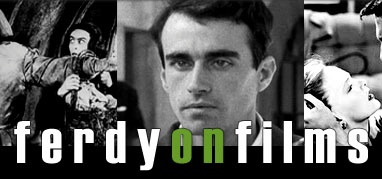 “That Adams may be critiquing the consumers of this photo seems to escape sophisticated readers such as critic A. D. Coleman, who says, ‘I’m sorry, but these people aren’t sophisticated enough to know when they’re being exploited.'” [This is from Ferdinand’s blog post on the Baichwal film.]
“That Adams may be critiquing the consumers of this photo seems to escape sophisticated readers such as critic A. D. Coleman, who says, ‘I’m sorry, but these people aren’t sophisticated enough to know when they’re being exploited.'” [This is from Ferdinand’s blog post on the Baichwal film.]
“Most of what A.D. Coleman had to say sounded reasonable right up until he said that ultimately, these are people he would not want to meet in a dark alley at night. He also said that Adams’s subjects are not educated enough, visually, to read what was really happening in the photos they helped create.” [This from an October 23, 2008 blog post about Baichwal’s film by the Canadian “emerging photographer” Kate Wilhelm.]
“Do Adams’ subjects know what they’re getting into? One gallery owner suggests that they lack the visual sophistication to get Adams’ work … ” [This from Jon Danziger’s November 24, 2003 review of the Baichwal film at digitallyobsessed.com.]
Even in the best context, you words were disparaging. Either you meant them to be, or you didn’t. I can speculate, but only you know for sure.
•
I could see this rapidly spiraling out of control. Rather than follow Ferguson down the rabbit hole, on December 22, 2010 I posted two successive comments and left the field. The first:
You and others are spreading false and misleading information about me and what I said in the film. The fact that someone puts quotes around “‘I’m sorry, but these people aren’t sophisticated enough to know when they’re being exploited'” doesn’t mean that I said those words.
When I said that these are people “I would not want to meet in a dark alley at night,” I made it quite clear — and it’s clear in the film, as I recall — that I wasn’t talking about Adams’s subjects themselves (none of whom I know) but about his depictions of them. I was therefore talking about the way Adams made them look, not about how they are in real life.
And I’m not now and never have been a “gallery owner.” The reviewer from whom you pull this quote doesn’t identify me as its source. How do you justify presenting it as a quote from me?
It’s no more “disparaging” on my part to suggest that Adams’s subjects aren’t particularly sophisticated in relation to the reading of photographs than it is to state that I’m not particularly sophisticated in relation to matters of farming, animal husbandry, and hunting. I don’t take offense at the latter, and see no reason why anyone should take offense at the former. Neither statement evaluates the intelligence of the persons referred to; they simply consider areas of knowledge.
Apparently, it’s not possible in this context to critique Adams’s photos, and his photographic treatment of his subjects, without having that taken as negative criticism of the people he photographs. That makes discussion fruitless.
The second:
![]() I should add that the review by Jon Danziger of the Baichwal film from which you extract that above comment about the unnamed “gallery owner,” which you present as some kind of evidence about me, also contains the following:
I should add that the review by Jon Danziger of the Baichwal film from which you extract that above comment about the unnamed “gallery owner,” which you present as some kind of evidence about me, also contains the following:
“Is Adams giving us something of the essence of life in Appalachia, or just making photographs that appeal to him? Is he working in the tradition of Walker Evans, or Diane Arbus? And is he telling us one thing but doing another, trying to have it both ways? … [A] good number of people in Kentucky aren’t too happy with Adams either, for they feel that his work plays directly into the worst sorts of stereotypes about the South: granny smoking a pipe, no-accounts sipping on jelly jars filled with moonshine, intimations of incest and inbreeding, the sorts of callous generalizations that have been made, and that Southerners have come to resent, at least since Lyndon Johnson and the Great Society program. … A sister of one of Adams’ subjects even goes so far as to say, ‘He has disgraced our family.'”
Extracting that little snippet that you use to discredit me from a review that much more substantially supports my take on Adams’s work is simply dishonest. When you and your commenters show the courage to level the same attack at the sister of one of Adams’ subjects who said “He has disgraced our family” — using the same terms you’ve applied to my critique — you’ll have begun to show some intellectual integrity. Surely she’s proven herself no less belittling, disparaging, infuriating, ignorant, cringe-making, insulting, or embarrassing than I have, no? I recommend that course of action to you, and look forward to reading the harsh words I know you and your equally brave and forthright commenters will aim at her.
Need I add that neither Ferguson nor any of his commenters took up that challenge?


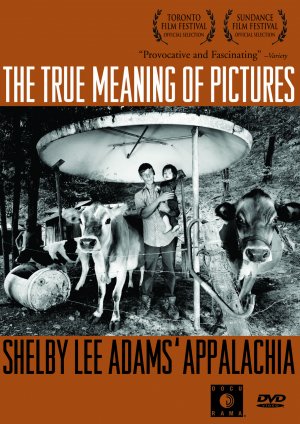
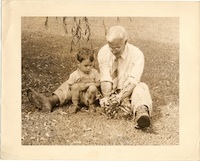
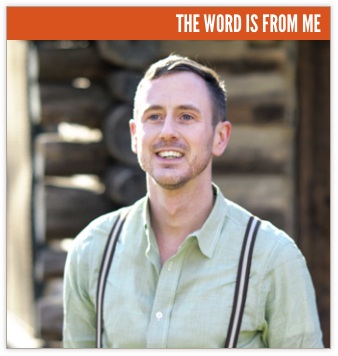
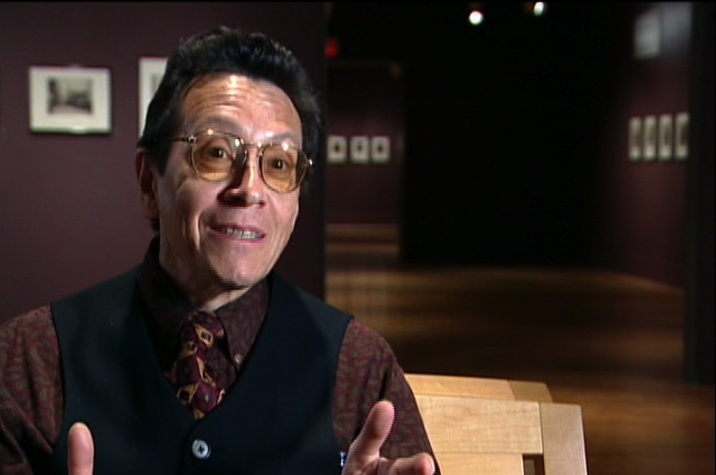
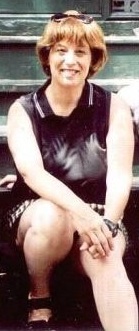




Leave a Comment